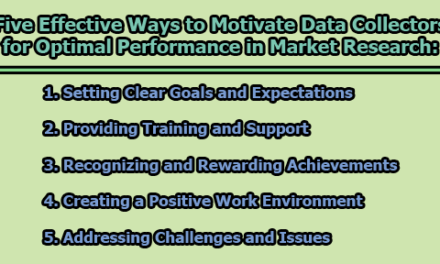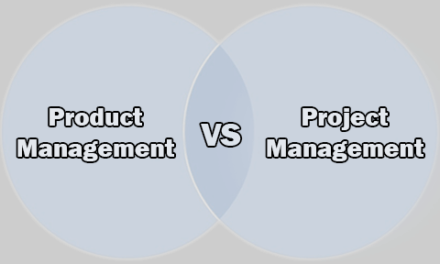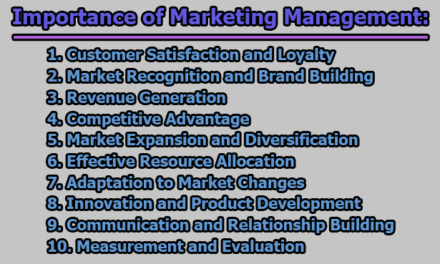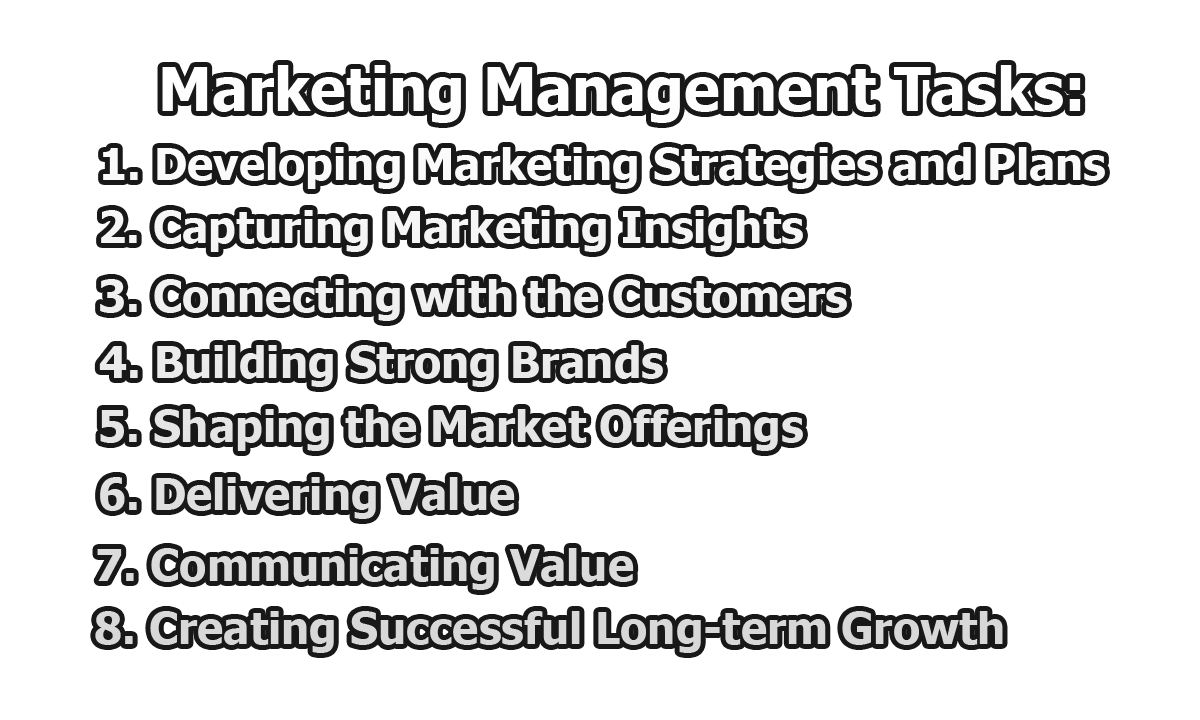Conceptual Framework of Customer Ecstasy:
In the contemporary business landscape, designing a product or service and selling it no longer guarantees success. A critical shift in focus has occurred, emphasizing the pivotal role of the customer. A business exists because customers exist, and therefore, the key to a successful business lies in increasing their numbers, ensuring their satisfaction, and addressing their most pressing concerns promptly. This shift is even more prominent in the “new normal,” where customers are not only concerned about the quality of a product or service but also about how it is delivered to them. The buzzword that propels a business ahead of its competitors in this context is “Customer Ecstasy.” In the rest of this article, we will explore the conceptual framework of customer ecstasy.
Section 1: Customer-Centric Corporate Culture:
A customer-centric corporate culture lies at the core of the concept of Customer Ecstasy. It’s not just a mere strategy; it’s a fundamental shift in the way a business operates and interacts with its customers. Here’s an exploration of what a customer-centric corporate culture entails:
1.1 Customer Values at the Core: In a customer-centric corporate culture, the values and needs of the customer are the central focus. Every aspect of the business, from product development to marketing and customer support, revolves around understanding, meeting, and even exceeding customer expectations.
1.2 Building Trust: Trust is the foundation of a customer-centric culture. Trust is built through transparency, honesty, and consistency. Customers need to trust that the business will consistently deliver on its promises and provide products or services of high quality.
1.3 Offering Solutions: Instead of just selling products or services, a customer-centric company strives to offer solutions to customers’ problems or needs. This requires a deep understanding of customer pain points and the ability to tailor offerings to address those specific issues.
1.4 Continuous Unbounded Happiness: Customer satisfaction is not seen as an endpoint but as an ongoing process. Businesses in this culture are committed to ensuring that customers continuously experience happiness in their interactions. This could involve ongoing support, loyalty programs, and personalized experiences that delight customers.
1.5 Making the Customer Feel Highly Valued: Customers are not just seen as a source of revenue; they are treated as valuable partners in the success of the business. This involves personalized communication, active listening to customer feedback, and a genuine appreciation for their loyalty.
1.6 Innovative Customer Services: As mentioned by Honebein et al. (2011), a crucial aspect of achieving Customer Ecstasy is innovation in customer services. This innovation is not limited to products but extends to the entire customer experience. Companies should actively seek new and creative ways to serve customers better.
1.7 Competitive Threats and New Revenue Opportunities: A customer-centric corporate culture is proactive in addressing competitive threats. Rather than reacting to challenges, it actively seeks solutions to maintain and enhance its competitive edge. Furthermore, it’s attuned to uncovering new revenue opportunities that may arise from understanding customer needs better than competitors.
1.8 Long-term Relationship Building: Customer-centric businesses are committed to building long-term relationships with their customers. This goes beyond individual transactions and focuses on nurturing customer loyalty over time. Such relationships are built on trust, reliability, and consistently delivering value.
1.9 Adaptation to Changing Customer Needs: Customer-centric companies are agile and adaptable. They are ready to evolve with changing customer needs and market dynamics. This adaptability ensures that they continue to meet or exceed customer expectations.
A customer-centric corporate culture is a holistic approach that permeates all levels of the organization. It’s about aligning the entire company’s vision, mission, and operations with the goal of providing customers with an exceptional experience. By doing so, businesses can not only achieve customer ecstasy but also establish themselves as leaders in their respective industries.
Section 2: Evolution of Customer Focus:
The Evolution of Customer Focus is a historical progression that highlights how businesses have shifted their approach to customer service and satisfaction over the years, ultimately culminating in the pursuit of Customer Ecstasy. Here’s a closer look at this evolution:
2.1 1970s – Serving Customers: In the 1970s, the primary focus of businesses was simply serving customers. The emphasis was on providing essential products and services efficiently and effectively. The goal was to fulfill basic needs and demands.
2.2 1980s – Customer Satisfaction: The 1980s marked a significant shift in focus, as businesses began aiming for customer satisfaction. It wasn’t enough to merely serve customers; companies recognized the importance of meeting or exceeding customer expectations. The objective was to ensure that customers were content with their experiences.
2.3 Late 1980s and 1990s – Customer Delight: As the late 1980s and the entire decade of the 1990s unfolded, businesses took the pursuit of customer happiness further. Achieving customer delight became the new goal. This meant going beyond mere satisfaction and delivering experiences that pleasantly surprised and exceeded customer expectations. Delighted customers were more likely to become loyal and repeat customers.
2.4 2000s Onwards – Customer Ecstasy: The 2000s marked the transition from customer delight to the pursuit of Customer Ecstasy. This concept implies that customer expectations are not just met but vastly exceeded, taking customer satisfaction to a whole new level. Achieving ecstasy is about delivering an experience that is so extraordinary that it goes beyond what customers could have ever imagined or dreamed of.
2.5 Exceeding Expectations in the Digital Economy: In the digital economy, where competition is fierce and customer empowerment is at an all-time high, businesses must exceed customer expectations to remain competitive. Achieving ecstasy has become the new benchmark for success. It is the only way to secure customer loyalty, as it leaves a lasting impression and fosters strong emotional connections between customers and brands.
2.6 Importance of Proactivity: To attain customer ecstasy, proactivity is key. Businesses must anticipate customer needs and desires, offering not only what customers want but also what they never knew they wanted. This pro-active approach distinguishes the pursuit of ecstasy from previous customer-focused eras, which were often more reactive.
2.7 Building Customer Loyalty: The shift from customer delight to customer ecstasy is a critical success path for any organization. When customers experience ecstasy, they not only become loyal customers but also brand advocates. They take ownership of the product or service and become more engaged with the brand, ultimately contributing to long-term success.
The evolution of customer focus represents a shift from basic service provision to the pursuit of Customer Ecstasy. This progression is driven by the ever-increasing demands of the digital economy and the need for businesses to not only meet but consistently exceed customer expectations. The shift from satisfaction to delight and finally to ecstasy represents a journey towards building stronger customer relationships, fostering customer loyalty, and ensuring sustained success in a highly competitive marketplace.
Section 3: Convergence of Marketing and Technology:
The Convergence of Marketing and Technology is a crucial aspect of realizing the concept of Customer Ecstasy. This convergence signifies the strategic blending of marketing practices with the capabilities of information and communication technology to create a holistic approach to customer satisfaction. Here’s an exploration of this concept:
3.1 Integrating Marketing and Technology: Converging marketing and technology involves seamlessly integrating marketing strategies and technological tools. This integration helps businesses to not only understand customer needs but also to meet and exceed them in innovative ways. It goes beyond traditional silos and encourages cross-functional collaboration.
3.2 Data-Driven Decision Making: Information and communication technology provides access to a wealth of customer data. This data can be leveraged for insights into customer preferences, behavior, and feedback. By using data analytics, businesses can make informed decisions, personalized recommendations, and tailor their offerings to meet specific customer needs.
3.3 Process Management and Automation: The convergence allows for the automation of various business processes, such as order processing, customer support, and feedback analysis. This automation not only improves efficiency but also enables faster responses to customer needs and issues, leading to a more satisfying experience.
3.4 Beyond Traditional Service Levels: Instead of just focusing on traditional measurements of service levels, such as response time or problem resolution time, businesses that embrace convergence shift their attention towards delivering better value to the customer. This involves understanding the customer’s journey and improving each touchpoint along the way to create a more enriching customer experience.
3.5 Pro-Action Over Reaction: One of the key elements of achieving Customer Ecstasy is being proactive rather than reactive. Instead of waiting for customers to voice their needs or complaints, businesses that embrace the convergence actively anticipate and address those needs. This proactive approach can result in customers feeling that their expectations are consistently exceeded.
3.6 Enhanced Personalization: With the convergence of marketing and technology, businesses can create highly personalized customer experiences. They can deliver tailored product recommendations, offers, and content based on individual customer profiles and past interactions. This personalization leads to a stronger emotional connection with the customer.
3.7 Agility and Adaptability: Information and communication technology enables businesses to adapt to changing customer needs and market dynamics quickly. They can tweak marketing strategies, product offerings, and customer service approaches in response to real-time data, ensuring that customers are continuously delighted.
3.8 Continuous Improvement: Convergence encourages a culture of continuous improvement. Through real-time data analysis and feedback loops, businesses can identify areas for enhancement and make the necessary adjustments to ensure customer ecstasy is consistently achieved.
The convergence of marketing and technology is a transformative approach that facilitates a deeper understanding of customer needs, faster response times, enhanced personalization, and a proactive stance towards exceeding customer expectations. By combining marketing strategies with technology, businesses can not only meet but consistently surpass customer expectations, ultimately leading to the attainment of Customer Ecstasy and a competitive edge in the digital economy.
Section 4: Managing Consumer Emotions:
The three-step progressive transition from satisfaction to delight to ecstasy represents a compelling success path for any organization, as indicated by the following Figure: Managing Consumer Emotions. This model illustrates the incremental stages of customer emotional engagement, reflecting the increasing level of customer happiness and loyalty. Let’s explore this progression:
Source: Urvashi Makkar & Harinder Kumar Makkar (2012). Customer Relationship Management. McGraw Education Private Limited.
4.1 Satisfaction: The first step in the journey is achieving customer satisfaction. At this stage, a business focuses on meeting basic customer needs and expectations. The primary goal is to ensure that customers are content with the product or service. Satisfaction is the foundation upon which further emotional engagement is built.
4.2 Delight: Moving beyond satisfaction, the next stage is to aim for customer delight. Delighting customers involves going above and beyond their expectations, providing pleasant surprises, and creating positive emotional experiences. Delight leads to a stronger emotional connection, increased loyalty, and word-of-mouth recommendations.
4.3 Ecstasy: The pinnacle of this progression is achieving customer ecstasy. It represents an extreme state of bliss and happiness, where the customer experiences something so extraordinary that it surpasses their wildest imagination. This level of satisfaction not only secures unwavering loyalty but also makes the customer feel a sense of ownership and attachment to the brand.
4.4 Key Takeaways from the Model:
- The model highlights that customer engagement is not a one-size-fits-all concept. It is a journey that starts with satisfaction and culminates in ecstasy.
- Progressing along this path requires a deep understanding of customer needs and the ability to consistently exceed those needs at each stage.
- Delight and ecstasy are not only about meeting customer expectations but about creating experiences that evoke strong positive emotions and lead to long-lasting relationships.
- Achieving ecstasy is a powerful driver for customer loyalty and advocacy, as customers who experience ecstasy are more likely to become brand champions and actively promote the organization.
The three-step transition from satisfaction to delight to ecstasy, as illustrated in above Figure, is a roadmap for organizations to understand and manage consumer emotions effectively. By progressing along this path, businesses can foster deeper customer relationships, secure loyalty, and ultimately position themselves for long-term success in a highly competitive marketplace.
Section 5: Operational Definition of Customer Ecstasy:
The operational definition of Customer Ecstasy is a precise and comprehensive description that encapsulates the essence of this concept. It serves as a guideline for organizations to understand and measure this extraordinary level of customer satisfaction.
5.1 Customer Ecstasy Defined: Customer Ecstasy is an extreme emotional state experienced by a customer when they receive a product or service that goes far beyond their wildest expectations. It is a level of bliss that surpasses what the customer could have ever imagined or dreamed of. It transcends the bounds of conventional customer satisfaction and enters the realm of pure delight and astonishment.
5.2 Key Elements of the Definition:
- Extreme Level of Bliss: Customer ecstasy represents a pinnacle of happiness. It is not just a moderate level of contentment; it is an intense feeling of joy, delight, and satisfaction that leaves the customer in a state of sheer euphoria.
- Beyond Imagination: The experience of ecstasy is so profound that it exceeds the customer’s wildest imagination. It means that the product or service has provided something so extraordinary that the customer couldn’t have anticipated it.
- Exclaiming “WOW!”: An essential part of the definition is the customer’s exclamation of “WOW!” This is a verbal expression of the sheer surprise and amazement that characterizes the moment of ecstasy. It indicates that the experience was not just satisfying but genuinely astonishing.
- Securing Customer Loyalty: Achieving customer ecstasy isn’t just about a one-time transaction. It’s about creating a bond so strong that the customer becomes not only loyal but also an advocate for the brand. Ecstasy fosters a deep sense of loyalty and commitment.
- Feeling Ownership: Customer ecstasy is so powerful that it makes the customer feel like they own the product or service. They develop a sense of emotional ownership and connection, which strengthens their relationship with the brand.
- Transcending Traditional Metrics: The definition highlights that customer ecstasy goes beyond traditional customer service metrics. It cannot be measured by simple metrics like response time or problem resolution. It involves delivering the unexpected, creating experiences that are unique and memorable.
- Pushing the Boundaries: Customer ecstasy is about pushing the boundaries of customer experience. It requires innovation and a commitment to going above and beyond, not just meeting customer needs but continuously surprising and delighting them.
The operational definition of Customer Ecstasy paints a vivid picture of an exceptionally delightful and satisfying customer experience that leaves the customer in a state of profound happiness and amazement. It emphasizes that achieving customer ecstasy is not just about meeting expectations but about exceeding them in ways that are truly extraordinary and unforgettable.
In conclusion, Customer Ecstasy is the pinnacle of customer-centric business strategy, emphasizing innovation, trust, exceeding customer expectations, and delivering an exceptional level of service that evokes a “WOW” response from the customer. To succeed in the modern business landscape, organizations must make this shift from customer satisfaction to delight and ultimately aim for customer ecstasy to remain competitive and foster customer loyalty.
References:
- Bai, B., Law, R., & Wen, I. (2008). The impact of website quality on customer satisfaction and purchase intentions: Evidence from Chinese online visitors. International Journal of Hospitality Management, 27(3), 391–402.
- Barnes, J. G. (2006). Building your customer strategy: A guide to creating profitable customer relationships. John Wiley & Sons.
- Jajoo, S. (2023). Customer Satisfaction, Customer Delight, and Customer Ecstasy as Antecedents of Brand Loyalty in Online Shopping (Doctoral dissertation). Shri Vaishnav School of Management, Created and maintained by INFLIBNET Centre. http://hdl.handle.net/10603/520773.
- Dick, A. S., & Basu, K. (1994). Customer loyalty: Toward an integrated conceptual framework. Journal of the Academy of Marketing Science, 22(2), 99–113.
- Ha, H.-Y., & Perks, H. (2005). Effects of consumer perceptions of brand experience on the web: Brand familiarity, satisfaction, and brand trust. Journal of Consumer Behaviour, 4(6), 438–452.
- Hague, P., & Hague, N. (2016). Customer Satisfaction Survey: The customer experience through the customer’s eyes. Cogent Publication Ltd.
- Keiningham, T., & Vavra, T. (2001). The customer delight principle: Exceeding customers’ expectations for bottom-line success.
- Khedkar, E. B. (2015). Effect of customer relationship management on customer satisfaction and loyalty. International Journal of Management, 6(5), 01–07.
- Kiel, G. C., & Layton, R. A. (1981). Dimensions of consumer information seeking behavior. Journal of Marketing Research, 18(2), 233–239.
- Kumar, V., & Reinartz, W. (2016). Creating enduring customer value. Journal of Marketing, 80(6), 36–6

Assistant Teacher at Zinzira Pir Mohammad Pilot School and College










